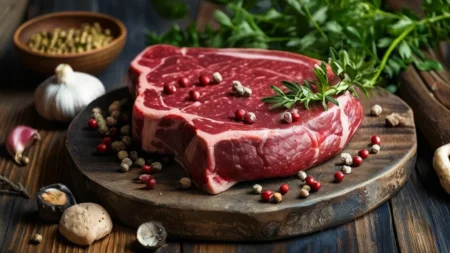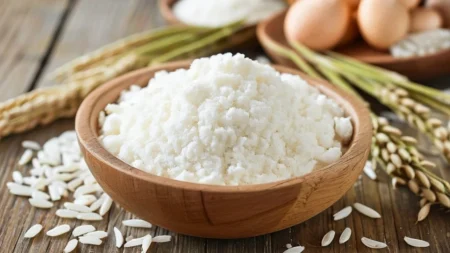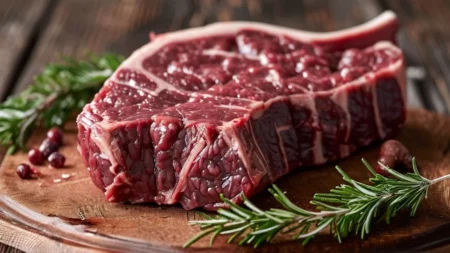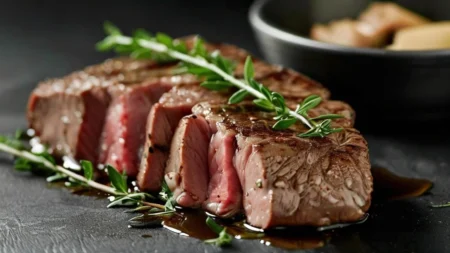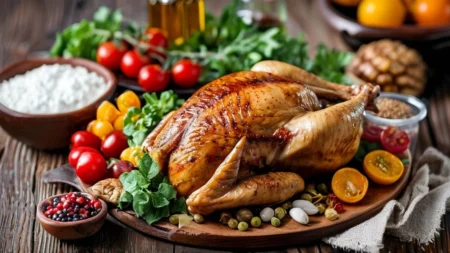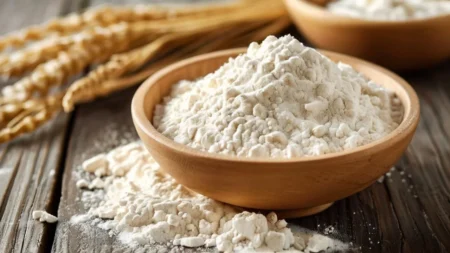Millet: A Nutrient-Rich Ancient Grain with Modern Benefits
Key Takeaways:
- Millet is a gluten-free, nutrient-dense grain rich in fiber, protein, and essential vitamins and minerals.
- It supports heart health, aids digestion, and helps manage blood sugar levels.
- Millet is a versatile grain used in a variety of dishes, from porridges to baked goods, and has a mild, slightly nutty flavor.
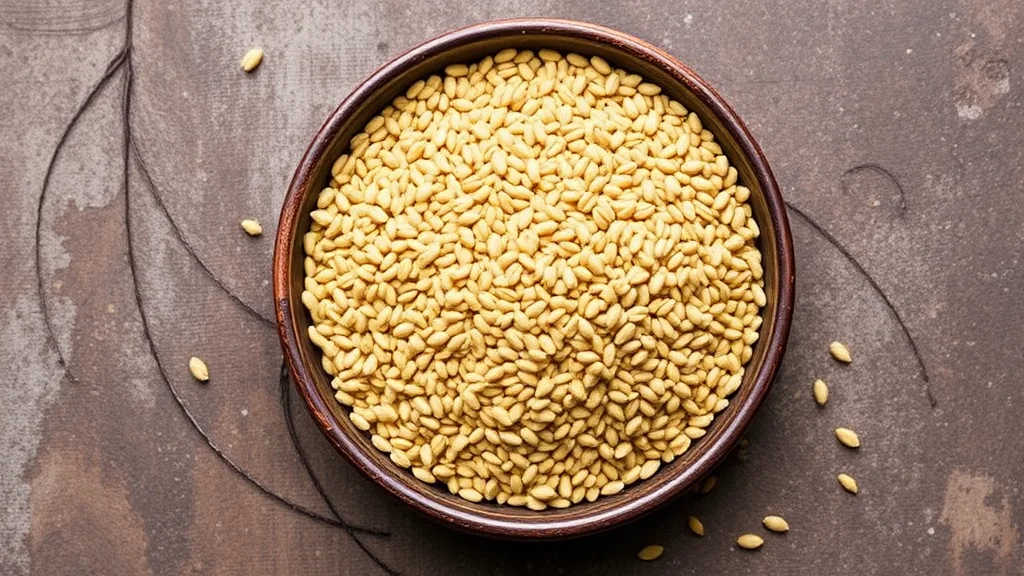
Nutritional Profile of Millet
Millet provides an excellent source of complex carbohydrates, protein, and essential nutrients. Here’s the nutritional breakdown of one cup (174 grams) of cooked millet:
| Nutrient | Amount |
|---|---|
| Calories | 207 kcal |
| Carbohydrates | 41 grams |
| Protein | 6.1 grams |
| Dietary Fiber | 2.3 grams |
| Fat | 1.7 grams |
| Magnesium | 76 mg (19% DV) |
| Phosphorus | 174 mg (25% DV) |
| Iron | 1.1 mg (6% DV) |
| Vitamin B6 | 0.2 mg (12% DV) |
Low in Calories and Rich in Nutrients
Millet is a nutrient-dense grain that provides a good amount of protein and fiber while being relatively low in calories. Its high magnesium content supports bone health, and its vitamin B6 contributes to proper brain function.
Health Benefits of Millet
Millet offers several health benefits due to its rich nutrient content and status as a whole grain.
1. Supports Heart Health
Millet contains magnesium and potassium, which are known to help lower blood pressure and support cardiovascular health. Additionally, the fiber in millet helps reduce cholesterol levels, further promoting heart health.
2. Aids Digestion
The fiber content in millet helps promote healthy digestion and prevents constipation. Eating whole grains like millet can contribute to a well-functioning digestive system and reduce the risk of digestive issues.
3. Helps Regulate Blood Sugar
Millet has a relatively low glycemic index, meaning it causes a slower, more gradual rise in blood sugar levels. This makes it an excellent choice for people with diabetes or those looking to manage blood sugar levels.
Types of Millet and Their Characteristics
There are several types of millet, each with slightly different characteristics and uses. Here’s a table highlighting the most common varieties:
| Type of Millet | Description | Common Uses |
|---|---|---|
| Pearl Millet | The most widely grown millet | Porridges, bread, flatbreads |
| Foxtail Millet | Small, yellow grains | Soups, pilafs, and porridges |
| Finger Millet | Rich in calcium | Flours for baking, porridges |
| Proso Millet | Mild, slightly nutty flavor | Cereals, side dishes, salads |
| Barnyard Millet | Fast-growing and drought-resistant | Traditional dishes, stews, porridges |
How to Cook Millet
Millet is versatile and easy to cook. Here’s a basic guide to cooking millet, along with some recipe ideas.
1. Cooking Basic Millet
To cook millet, use a ratio of 1 cup of millet to 2 cups of water. Rinse the millet thoroughly under cold water to remove any impurities. Bring the water to a boil, add the millet, cover, and simmer on low heat for 20-25 minutes until the water is absorbed and the grains are tender.
2. Millet Porridge
For a creamy breakfast porridge, use a 1:3 ratio of millet to water or milk. Add a pinch of salt and cook until the millet becomes soft and porridge-like. Top with fresh fruits, nuts, and a drizzle of honey.
3. Millet Salad
Cooked and cooled millet makes a great base for salads. Toss with vegetables, herbs, olive oil, and a dash of lemon juice for a light and refreshing dish.
Millet vs. Quinoa: A Nutritional Comparison
Both millet and quinoa are gluten-free grains popular in health-conscious diets. Here’s a comparison of their nutritional values:
| Nutrient | Millet (1 cup, cooked) | Quinoa (1 cup, cooked) |
|---|---|---|
| Calories | 207 kcal | 222 kcal |
| Protein | 6.1 grams | 8.1 grams |
| Carbohydrates | 41 grams | 39 grams |
| Dietary Fiber | 2.3 grams | 5.2 grams |
| Fat | 1.7 grams | 3.6 grams |
While both grains are nutritious, quinoa has slightly more protein and fiber than millet, making it a higher-protein option. However, millet is still a great source of complex carbohydrates and essential minerals.
Popular Millet Recipes
Millet can be used in a variety of dishes, both savory and sweet. Here are a few popular millet recipes to try:
1. Millet Pilaf
Millet can be cooked like rice in a pilaf. Sauté onions, garlic, and vegetables, then add millet and broth. Simmer until the millet is cooked and the flavors meld together.
2. Millet Flatbreads
Ground millet flour can be used to make gluten-free flatbreads. Simply mix millet flour with water, a pinch of salt, and a little oil, then cook on a griddle for soft, pliable bread.
3. Millet Pancakes
For a hearty, gluten-free breakfast, combine millet flour with eggs, milk, and a touch of honey to create fluffy millet pancakes. Serve with fresh fruit and a drizzle of maple syrup.
How to Store Millet
Millet has a relatively long shelf life if stored properly. Here are some tips for storing both uncooked and cooked millet.
1. Storing Uncooked Millet
Store uncooked millet in an airtight container in a cool, dry place. It can last up to six months in the pantry, or up to a year if stored in the refrigerator or freezer.
2. Storing Cooked Millet
Cooked millet should be stored in an airtight container in the refrigerator for up to five days. You can also freeze cooked millet in individual portions for easy use in future meals.
Conclusion
Millet is an ancient grain with modern health benefits, offering a wealth of nutrients in a gluten-free package. It supports heart health, aids digestion, and helps regulate blood sugar, making it a valuable addition to any diet. Whether enjoyed as a warm breakfast porridge, a base for salads, or ground into flour for baking, millet’s versatility and mild flavor make it a nutritious and delicious option for meals.
FAQ
Q: Is millet gluten-free?
A: Yes, millet is naturally gluten-free, making it a great option for people with celiac disease or gluten sensitivity.
Q: Can millet be eaten every day?
A: Millet can be part of a healthy diet and eaten regularly. However, like all grains, it should be consumed in moderation as part of a balanced diet.
Q: How does millet taste?
A: Millet has a mild, slightly nutty flavor, which makes it a versatile grain that can be used in both sweet and savory dishes.
Q: Is millet a good source of protein?
A: Millet contains a moderate amount of protein compared to other grains, but it is not as high in protein as quinoa. However, it is still a valuable source of plant-based protein.
Q: Can millet help with weight loss?
A: Millet is low in calories and high in fiber, making it a good option for those looking to manage their weight. Its fiber content promotes feelings of fullness, which can help control appetite.





